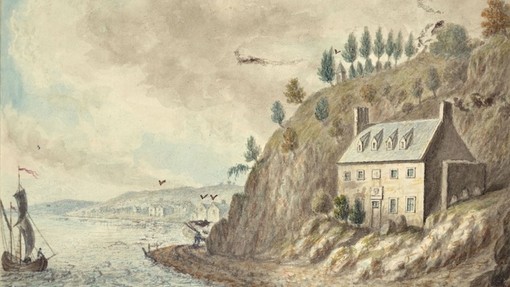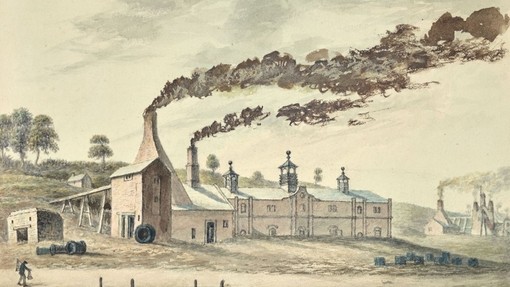Exhibition Highlights Welsh Countryside’s Connections to Slavery, Science, and the Industrial Revolution
A new exhibition about Welsh travel writer Thomas Pennant reveals how a rural corner of Flintshire fits into the history of empire, environmentalism, and the Enlightenment.

Between April and July this year, the Greenfield Valley Heritage Park near Holywell in north-east Wales will host an exhibition on the groundbreaking local travel writer and zoologist Thomas Pennant, who left a fascinating record of the area’s natural, social, and industrial history at the end of the eighteenth century. Curated by academics from the University of Wales Centre for Advanced Welsh and Celtic Studies, who are preparing new online editions of Pennant’s Welsh tours for the Curious Travellers Project, this exhibition features the striking original artwork Pennant commissioned to embellish his travels, and the lively zoological drawings that illustrate his scientific works.
Pennant’s writings link the beautiful scenery of Flintshire to the imperial economies of slavery and coal-fuelled capitalism. Cotton produced by enslaved workers was milled in Flintshire by child labourers, and copper worked in Greenfield was in turn used to purchase human beings in west Africa. This eighteenth-century history is still with us today, as shown by the environmental effects that fossil fuels—like the coal mined by Welsh landowners including Pennant himself—continue to have on the area’s flora and fauna.
Pennant—arguably the most successful Welsh writer of his age, read by figures including Samuel Johnson and William Wordsworth—is currently the subject of a major AHRC-funded collaborative research project between the Universities of Wales and Glasgow, and the Natural History Museum in London. Principal investigator Prof. Mary-Ann Constantine, one of the curators of this exhibition, said:
‘Greenfield Valley is an extraordinary place: old and new, local and international, past and present, are all packed into a rich mile of heritage sites between St Winifred’s Well and the Dee Estuary. We’re delighted to bring Thomas Pennant’s words and images back into the landscapes which produced them, and are grateful to our partners at the Greenfield Valley Heritage Park for hosting this exhibition.’
Notes for Editors
Contact: Dr Angharad Elias (Admin Officer) a.elias@wales.ac.uk
1. The Centre for Advanced Welsh and Celtic Studies (CAWCS) was established by the University of Wales in 1985 as a dedicated research centre conducting team-based projects on the languages, literatures, culture and history of Wales and the other Celtic countries. It is located in Aberystwyth, adjacent to the National Library of Wales, which is an internationally renowned copyright library with excellent research facilities.
2. CAWCS offers unique opportunities for postgraduate students to work alongside specialists in a dynamic and supportive environment. We welcome enquiries about MPhil/PhD topics in any of our research areas. For more information about research opportunities, or for an informal chat about possible topics, contact our Head of Graduate Studies, Dr Elizabeth Edwards: e.edwards@wales.ac.uk
3. CAWCS is the home of the Dictionary of the Welsh Language.

Further Information
Arwel Lloyd
Principal PR and Communications Officer
Corporate Communications and PR
Email: arwel.lloyd@uwtsd.ac.uk
Phone: 07384 467076
